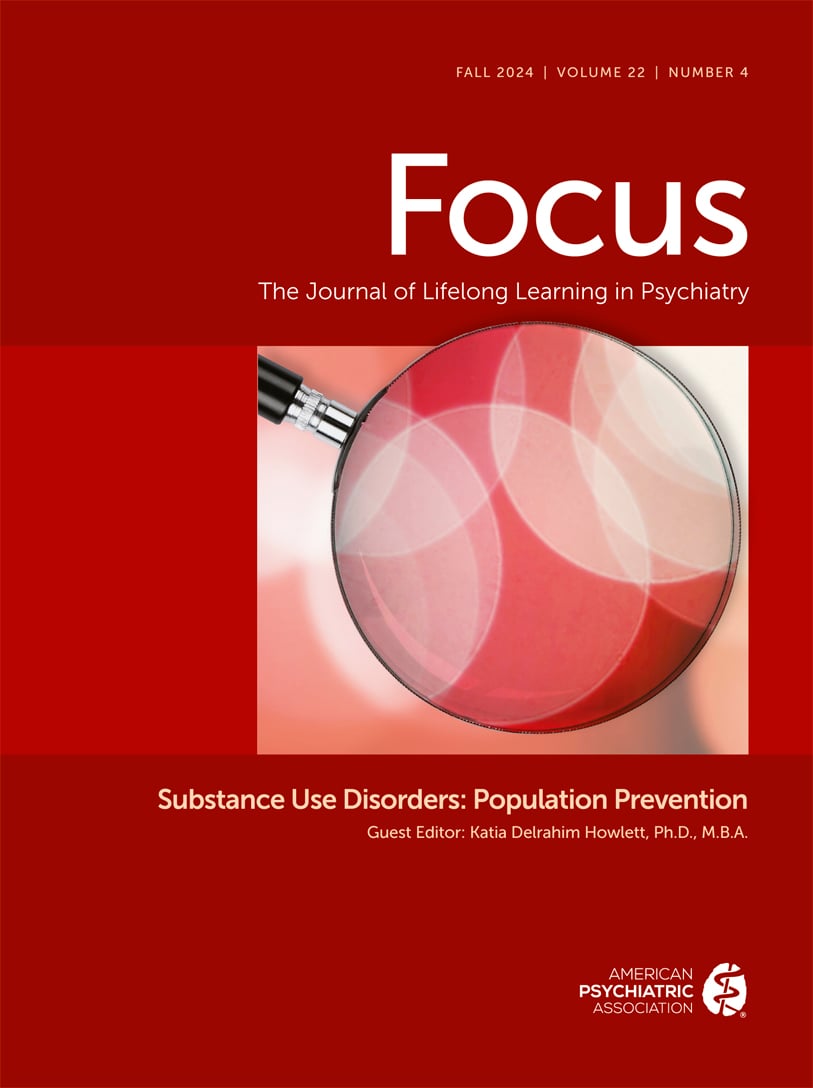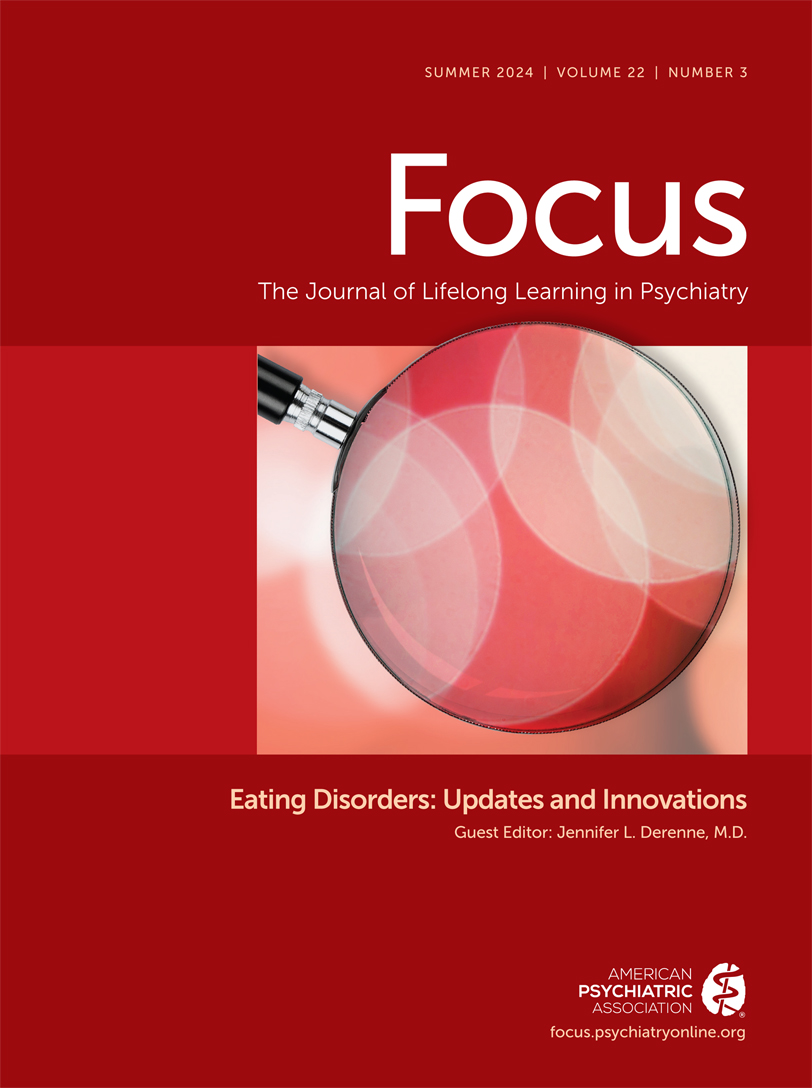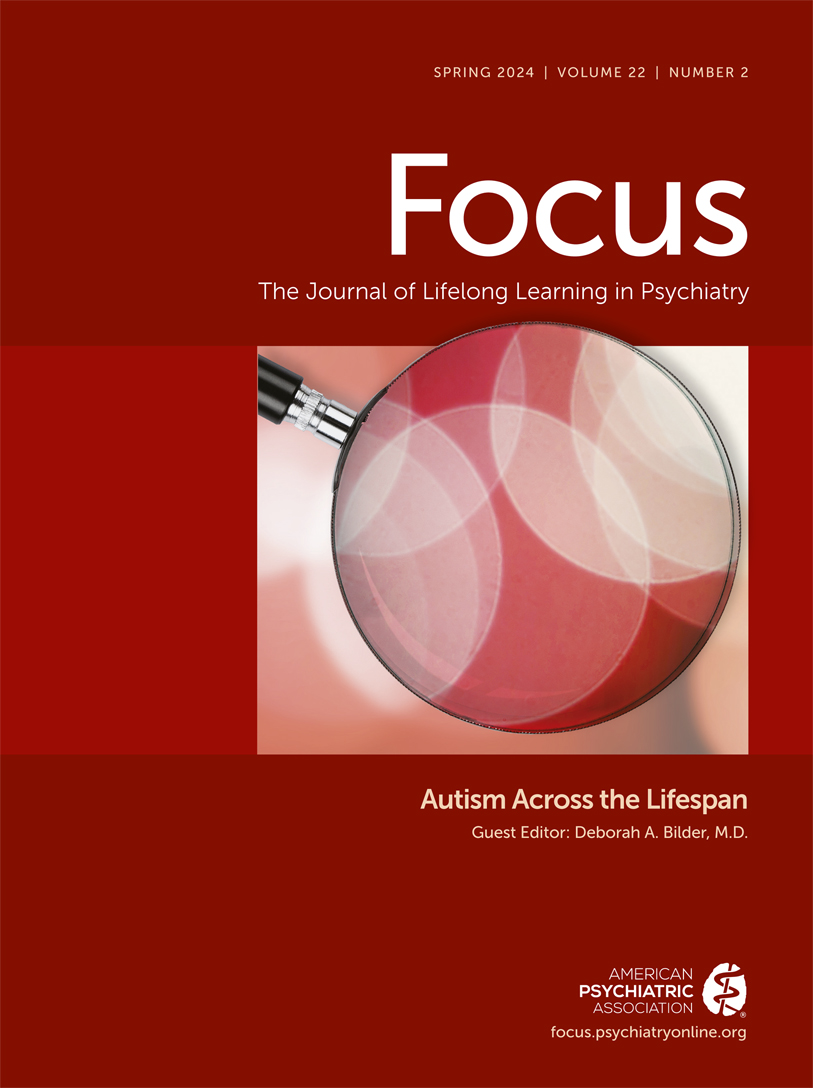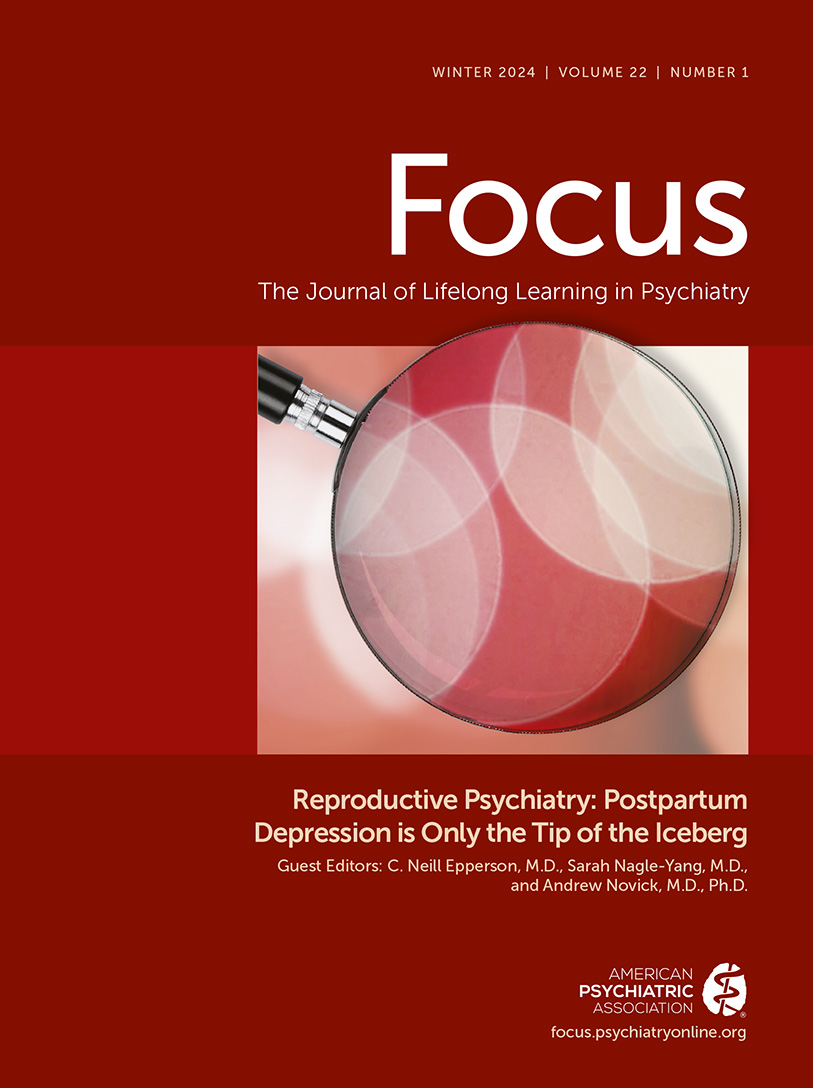Focus
- Volume 3
- Number 2
- April 2005
EDITORIAL
CLINICAL SYNTHESIS
Publication date: 01 April 2005
Pages179–183Body dysmorphic disorder (BDD), a distressing or impairing preoccupation with an imagined or slight defect in appearance, is a severe and relatively common disorder that usually goes undiagnosed in clinical practice. Individuals with BDD have a high rate ...
https://doi.org/10.1176/foc.3.2.179Publication date: 01 April 2005
Pages194–202Approximately 4 million Americans are chronically infected with the hepatitis C virus (HCV). Compared with the general U.S. population, patients with HCV have a higher prevalence of psychiatric illness, and patients with severe mental illness have four to ...
https://doi.org/10.1176/foc.3.2.194REVIEW
Publication date: 01 April 2005
Pages208–224Cardiovascular disease (CVD) affects one in five Americans and is the leading cause of death in the United States, claiming more lives than the next five leading causes of death combined. Psychiatric disorders are also quite common: anxiety disorders ...
https://doi.org/10.1176/foc.3.2.208INFLUENTIAL PUBLICATION
Publication date: 01 April 2005
Pages261–265This study assessed the prevalence of psychiatric disorders among hepatitis C patients at a Veterans Affairs Medical Center. Medical records of 306 randomly selected hepatitis C-positive patients were reviewed for past and present DSM-IV-based psychiatric ...
https://doi.org/10.1176/foc.3.2.261Publication date: 01 April 2005
Pages266–279Objective: Bipolar disorder affects 0.5%–1.5% of individuals in the United States. The typical age at onset is late adolescence or early adulthood, placing women at risk for episodes throughout their reproductive years. General guidelines for the ...
https://doi.org/10.1176/foc.3.2.266Publication date: 01 April 2005
Pages304–309It appears that many individuals with body dysmorphic disorder (BDD) receive nonpsychiatric medical treatment and surgery; however, this topic has had little systematic investigation. This study assessed the nonpsychiatric treatment sought and received by ...
https://doi.org/10.1176/foc.3.2.304Publication date: 01 April 2005
Pages310–319Psychological distress often causes suffering in terminally ill patients and their families and poses challenges in diagnosis and treatment. Increased attention to diagnosis and treatment of depression can improve the coping mechanisms of patients and ...
https://doi.org/10.1176/foc.3.2.310Publication date: 01 April 2005
Pages320–332Delirium is a mental disorder characterized by disturbances in consciousness, orientation, memory, thought, perception, and behavior, of acute onset and fluctuating course. It occurs in hyperactive, hypoactive, or mixed forms, in up to 50% of elderly ...
https://doi.org/10.1176/foc.3.2.320Publication date: 01 April 2005
Pages333–340Objective: The purpose of this study was to examine the efficacy and side effects of haloperidol, chlorpromazine, and lorazepam for the treatment of the symptoms of delirium in adult AIDS patients in a randomized, double-blind, comparison trial. Method: ...
https://doi.org/10.1176/foc.3.2.333Publication date: 01 April 2005
Pages341–353Most deaths in the United States occur in the context of chronic diseases in later life and are too often accompanied by potentially remediable emotional or physical suffering. Geriatric psychiatrists and other mental health professionals can contribute ...
https://doi.org/10.1176/foc.3.2.341Past Issues
View Issues Archive
Vol. 22 | No. 4

Vol. 22 | No. 3

Vol. 22 | No. 2
